Key takeaways
- Handmade paper crafts offer a unique blend of textures and personal connection, emphasizing the importance of patience and mindful creation.
- Working with old maps requires careful handling and gentle adhesion to preserve their fragile nature while allowing for creative layering and collage techniques.
- Essential tools for map crafting include a sharp craft knife, a cutting mat, and fine-tipped brushes to ensure precision and preserve the integrity of the material.
- Embrace spontaneity and imperfections during the crafting process, as they often enhance the character and uniqueness of the final piece.
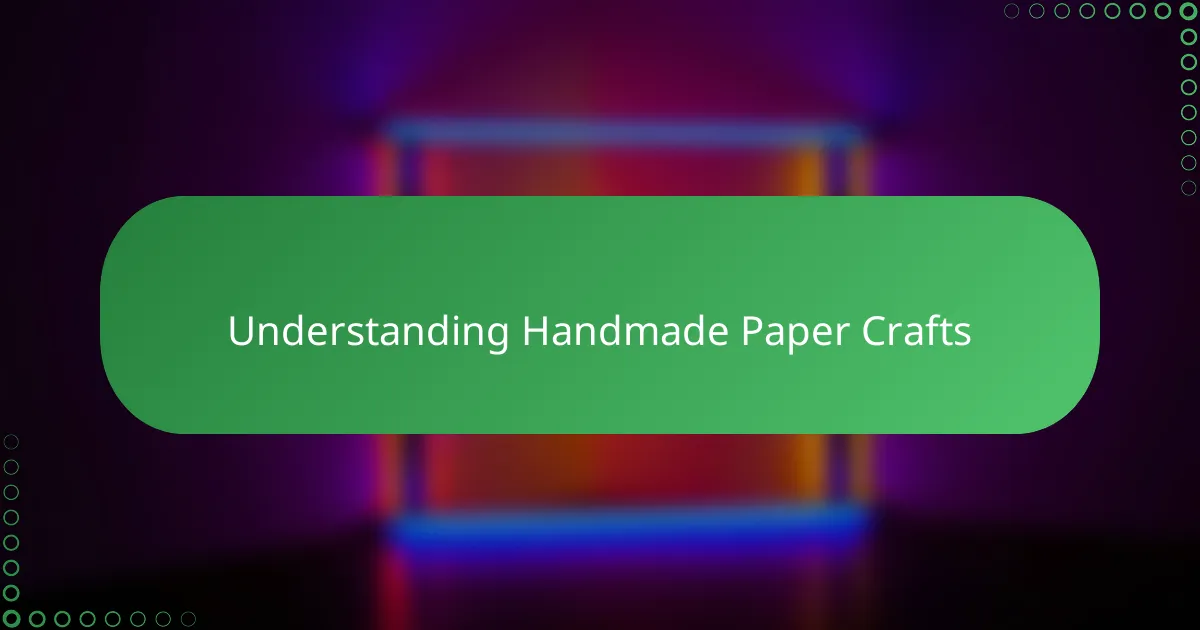
Understanding handmade paper crafts
Handmade paper crafts hold a special place in my creative journey because they blend simplicity with endless possibilities. When I first started working with handmade paper, I was struck by its unique textures and weight, which seem impossible to replicate with factory-made sheets. Have you ever noticed how each piece of handmade paper tells a story through its fibers and imperfections?
What fascinates me most is how this traditional art form invites patience and attention to detail. Crafting by hand feels like a mindful escape—there’s a calming rhythm in every fold, tear, or glue dab that machine processes just can’t match. It makes me wonder: in a world driven by speed, isn’t there something refreshing about slowing down to create something you can truly connect with?
The tactile nature of handmade paper crafts gives the artist a sense of ownership that I find deeply satisfying. Each project becomes a dialogue between the creator and the material, and that connection breathes life into the final piece. Don’t you think that this intimate relationship between artist and craft transforms an ordinary object into something meaningful?
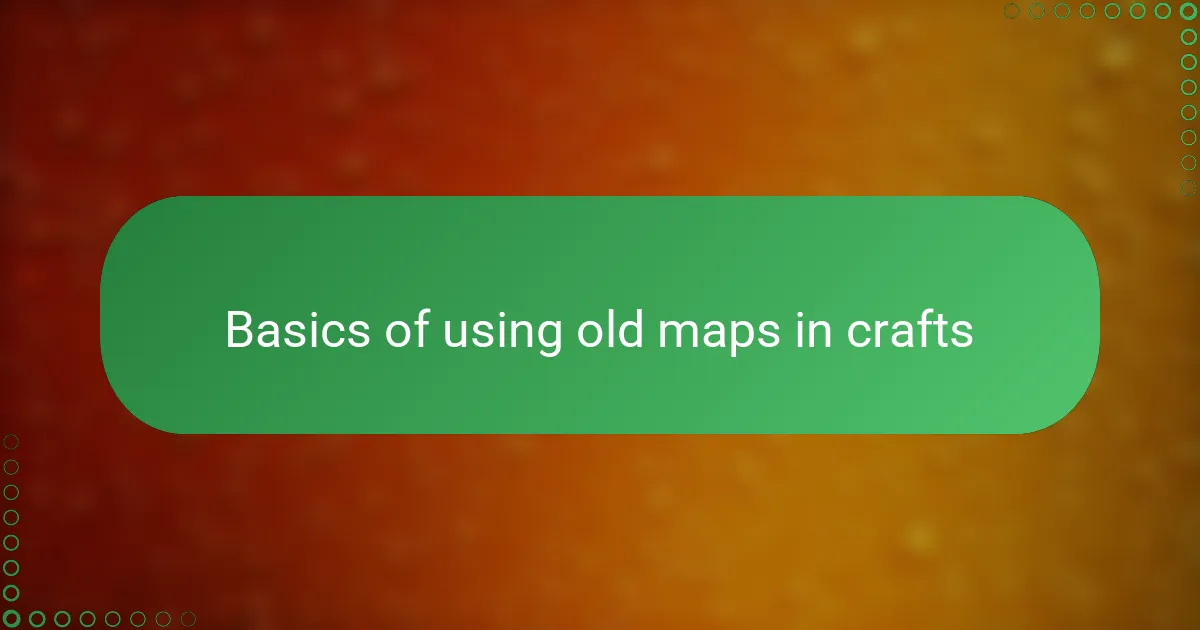
Basics of using old maps in crafts
Working with old maps in handmade paper crafts has always felt like uncovering a hidden treasure to me. The delicate lines and faded colors speak of journeys long past, inviting a kind of reverence that you don’t find in new papers. Have you ever held a piece of map paper and felt that quiet connection to places and stories beyond your own?
Before diving in, I always take a moment to carefully consider the condition of the map. Since old maps tend to be fragile, gentle handling is key—any sharp folds or heavy glue can easily damage them. This mindful approach not only preserves their charm but also deepens my appreciation for the craft itself.
One basic trick I rely on is using thin layers of glue or adhesive to keep the map’s texture visible and alive. It made me realize that preserving the original character of the map doesn’t limit creativity; instead, it opens doors to new ways of blending history with handmade paper art. Have you tried layering map fragments to create intriguing collages or textures? It’s a simple step but one that brings so much personality to the project.
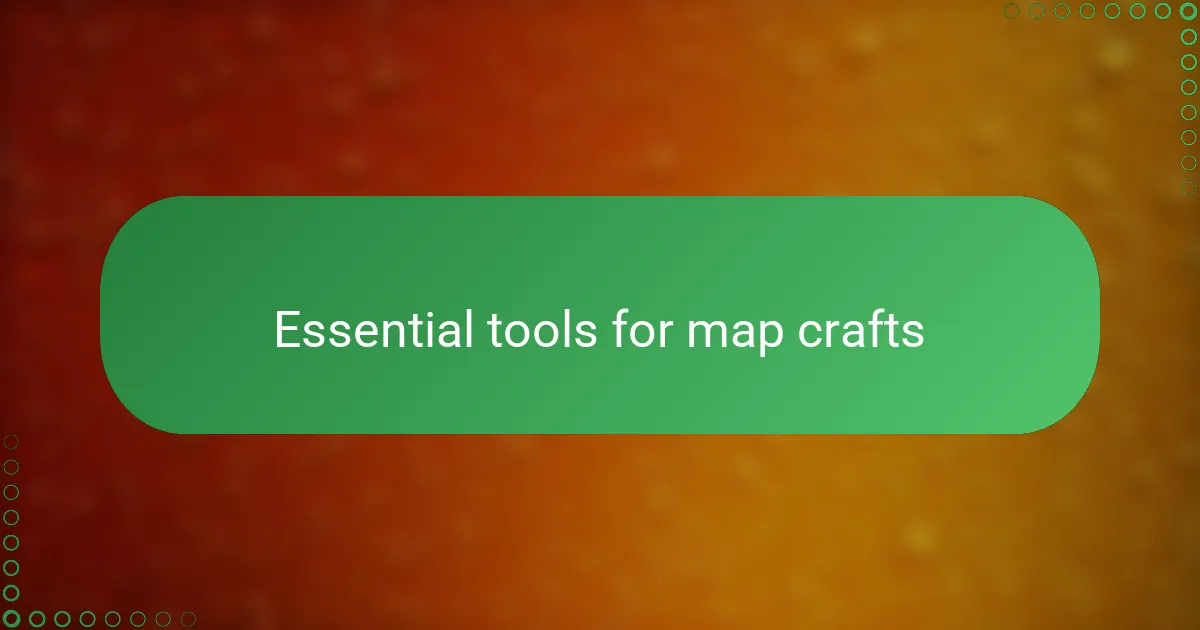
Essential tools for map crafts
When I start a new map craft project, a sharp craft knife is always within reach. It lets me make precise cuts without damaging the delicate paper, which is so important when working with thin map layers. Have you ever struggled with tearing a fragile map just as you were about to complete a design? That tool has saved me more times than I can count.
I also keep a good quality cutting mat nearby—it’s like having a sturdy stage for my creative moves. The mat protects my work surface and gives me the confidence to cut freely, knowing the blade won’t slip or dull early. It’s one of those essentials that might seem basic but truly makes a difference in the flow of crafting.
Lastly, I can’t overlook the importance of having fine-tipped brushes for applying glue gently. I’ve learned that even the slightest over-application can cause maps to wrinkle or tear. Do you find that using a light hand with adhesive brings a more refined finish? For me, it turns fragile maps into lasting art pieces without losing their charm.

Creative techniques for old map crafts
One technique I’ve grown fond of is decoupage with old maps layered over handmade paper. The way the map’s faded details peek through translucent layers never ceases to amaze me. Have you ever noticed how overlapping map fragments create unexpected visual stories, as if you’re merging different journeys on a single canvas?
Another approach I enjoy involves shaping maps into three-dimensional forms—like folding them into origami or turning them into delicate paper flowers. This method challenges the fragile nature of the paper, but when done carefully, it breathes new life into these antique materials. I often find myself holding my breath, hoping each fold won’t tear, but the result feels so rewarding and tactile.
Sometimes I paint lightly over the map’s surface with watercolors to enhance its features while preserving its essence. Adding subtle color accents makes the geography pop without overpowering the paper’s vintage charm. Have you experimented with blending paint and paper this way? It’s a playful balance that invites creativity without losing respect for the map’s history.
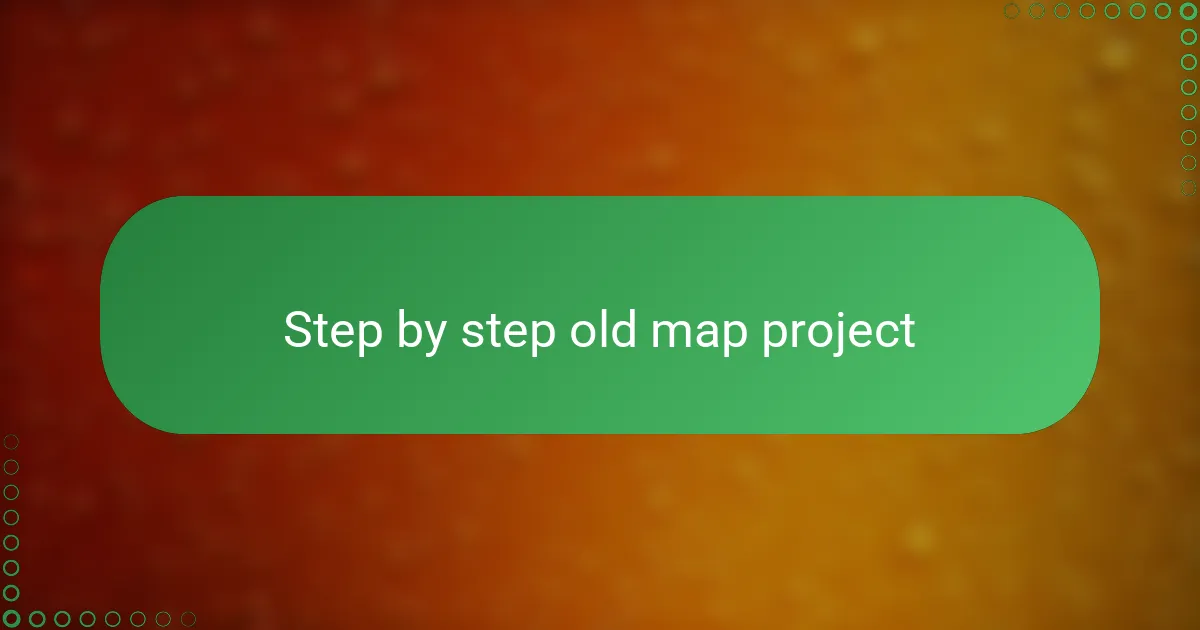
Step by step old map project
Starting a project with old maps feels like unfolding a story with each step. First, I carefully select a map section that speaks to me—sometimes it’s a place I’ve visited or dream of exploring. Have you noticed how choosing the right fragment sets the tone for the entire piece? That initial choice always feels charged with meaning.
Next, I gently trim the map using my trusty craft knife, making sure to follow the natural lines or interesting borders. It’s a delicate process, but I find that taking my time here pays off—it’s in these little details that the project gains personality. Don’t you think there’s something satisfying about shaping something so fragile with precision?
Finally, layering the map onto your handmade paper base feels like merging past and present. I usually apply glue with a soft brush in thin, even strokes, preserving the texture beneath. Have you ever been surprised by how this simple act can make the map come alive, almost like it’s whispering its history back to you? It’s moments like these that make the whole process truly rewarding.
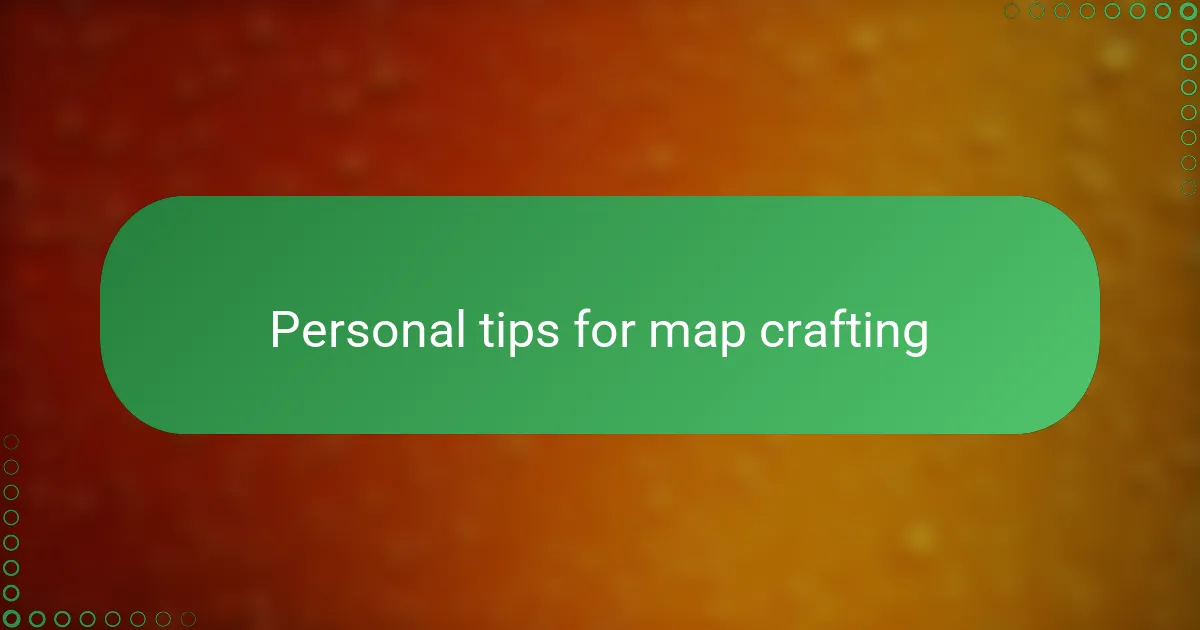
Personal tips for map crafting
When I’m working on a map craft, one tip I always follow is to trust my intuition with the placement of each piece. Sometimes, stepping back and letting the map fragments fall where they feel right has led to the most unexpected and beautiful compositions. Have you ever been surprised by how a spontaneous decision brought your project to life?
I also find it essential to balance patience with playfulness during the process. If a tear happens or a fold isn’t perfect, I try to see it as part of the story rather than a mistake. Those little imperfections often add character and make the craft uniquely mine—doesn’t that make crafting feel more genuine?
Lastly, I keep a small notebook nearby to jot down ideas or sketch layouts before cutting into the precious maps. This habit saves me from rushed choices and keeps creativity flowing steadily. Have you noticed how planning—even just a little—can transform your crafting experience from stressful to joyful?
